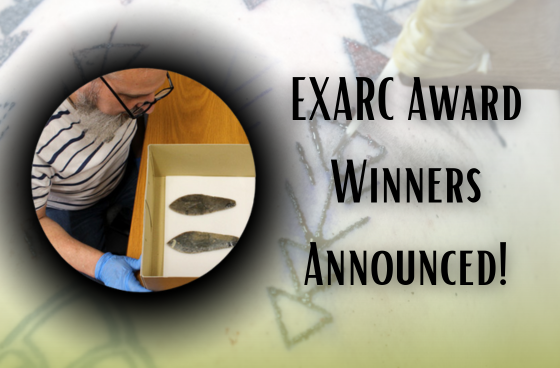
The EXARC Award consists of two grants of €500 awarded annually, each for worthwhile archaeological experiments, regardless where in the world they are executed and by whom. These awards are sponsored by EXARC member John Kiernan (US). For previous projects funded by the EXARC award, you can check the main page here. As the year 2024 draws to a close, so too does our second call for this year's EXARC Award, and we are excited to present here the two winning projects!
Project 1: "Rock Art or Utilitarian Activities? An Experimental Study of the Mghvimevi Engravings"
Aleko Zavradashvili and Levan Losaberidze
"Mghvimevi rock art site (Western Georgia) comprises five rock shelters and two caves. 30 engravings were found on the floor of rock shelter No.5, featuring non-figurative motifs such as linear marks. Our proposed research aims to determine whether the linear marks at Mghvimevi result from utilitarian or non-utilitarian activities. Engravings are considered evidence of symbolic behaviour, forming a special category of material culture that preserves information about the actions performed by the engraver. However, some engravings may result from utilitarian activities (e.g., meat cutting, skin processing, etc) when bedrock (or other material with incisions) was used as a cutting board. The proposed research seeks to shed light on the nature of the Mghvimevi petroglyphs. As a result, we will be able to distinguish engravings from utilitarian incisions."
Project 2: Spindling for weaving: Incorporating intentionality into textile studies
Jennifer Beamer
"In the absence of extant textiles, the tools can be used to predict which fabrics may have been possible to produce with a given assemblage. However, the extent to which it can be applicable to all archaeological assemblages remains limited. This was evident in the Danebury (UK) assemblage, which contained comparatively heavy loomweights and spindle whorls. The central aim of this project is to create and use 6-8 proxy spindle whorls made from the Danebury whorl assemblage, to provide an assessment of the utility of heavier spindle whorls. The expected outcomes of this experiment will improve understanding of the impact of heavy spindle whorls on yarn and woven products, and establish a dynamic view of spindle whorl technology which may potentially resolve
whorl variability questions and contribute to studies relating to social/environmental
change."
We look forward to seeing how these projects progress! If you also want to follow the projects, make sure to keep an eye on our social media and blog, and follow both of our project managers through the links below!
